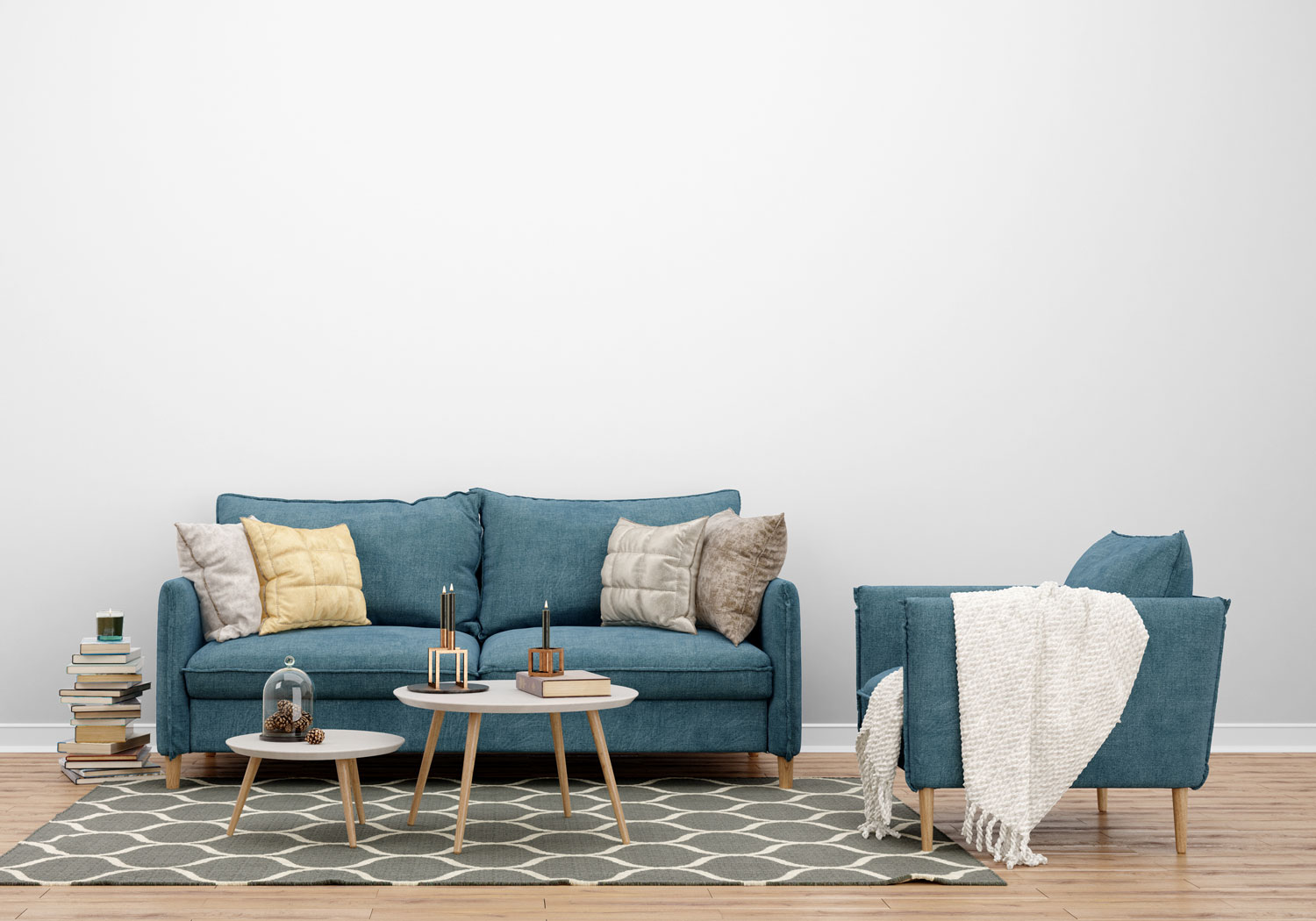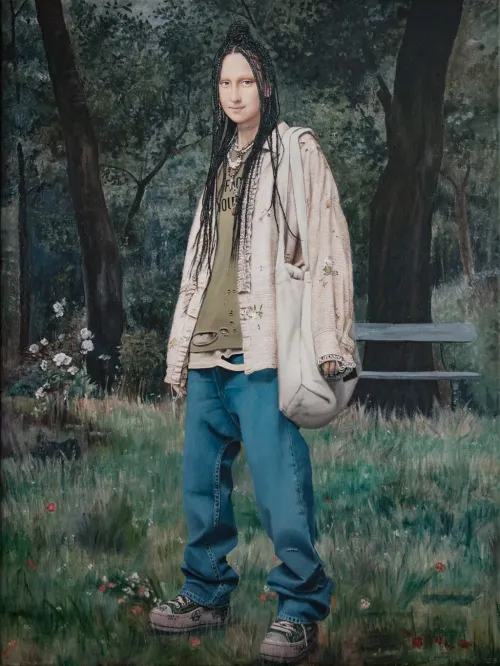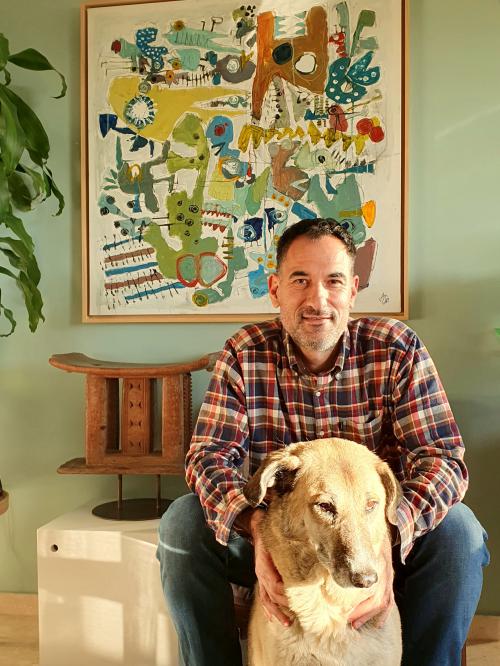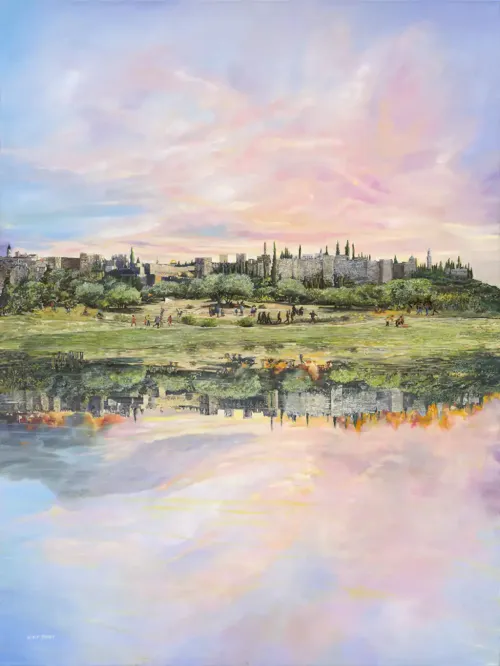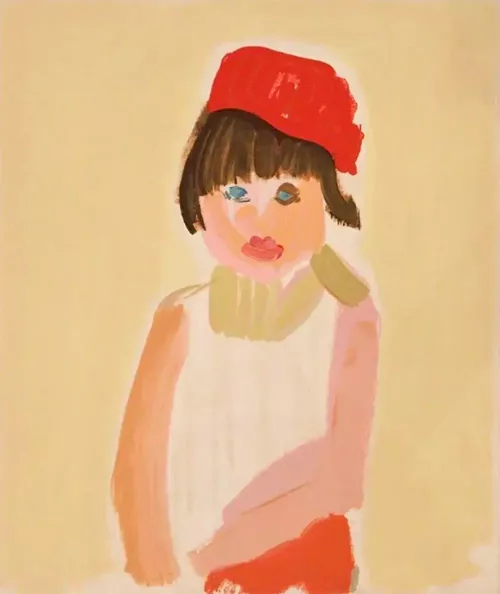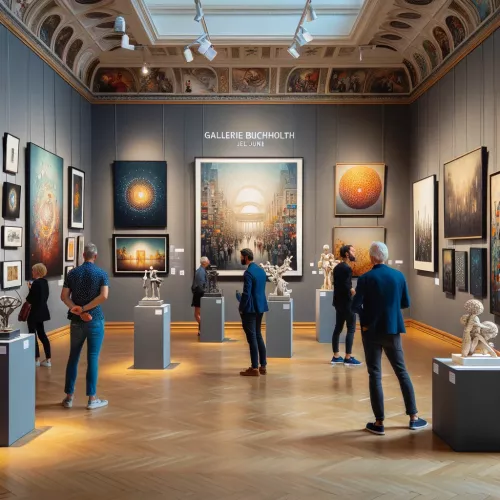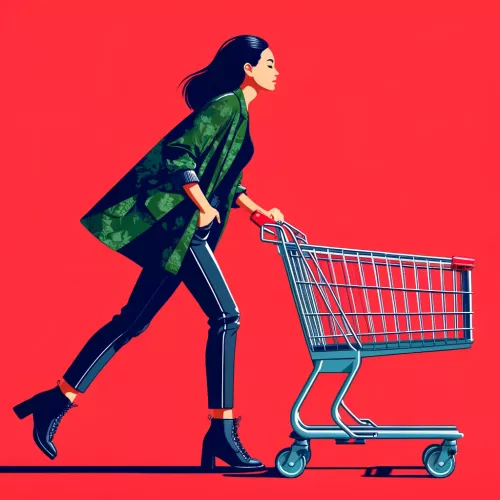Papapapa
, 2024
"Papapapa," a striking piece by Ilan Halfon, immerses viewers in a world of intense emotion and reflective irony. Utilizing the expressionist style, Halfon reimagines familiar childhood icons through a monochromatic palette. The exaggerated facial expressions and bold, thick brushstrokes lend a surreal and dramatic quality to the artwork, creating a powerful contrast between the innocence of the character and the dark, intense atmosphere of the piece.
Halfon's approach to this piece reflects his broader artistic mission: to challenge the conventions of pop culture and reinterpret the icons that have shaped our collective consciousness. The limited use of color, focusing on black and white tones, enhances the depth of the character, emphasizing the raw, emotional intensity of the subject matter. This unique portrayal is not only visually captivating but also invites viewers to reflect on the complex interplay between childhood nostalgia and adult disillusionment. The piece is perfectly suited for spaces that celebrate bold, contemporary art—whether it’s a modern living room, a sophisticated art gallery, or a media room designed for reflection and conversation. The dramatic tones and expressive brushwork make it a captivating centerpiece, sparking dialogue and introspection among those who view it. Crafted with oil on canvas, "Papapapa" is a testament to Halfon’s mastery in blending pop art and expressionism, creating a work that is both visually striking and rich with meaning. This artwork is more than a depiction; it’s a statement, a narrative of identity, and a critique of the familiar icons that populate our visual culture.
Global delivery managed by our logistics specialists.
Shipping costs, duties, and taxes are not covered in the price.
14-day no-cost return policy (excluding custom-made items).
Track your order using a tracking link sent to your email.
Your order is fully secured against any damage or loss.
Return Policy: 14-day free returns.
Returns are accepted within 14 days. WeArt is fully committed to customer satisfaction: you have 14 days to return an original work. The work must be returned to the artist in perfect condition, in its original packaging. All eligible items can be returned (unless otherwise indicated).

Ilan Halfon
Collective Exhibitions Participant
Awarded Artist
Biography
In my art, I posit childhood icons like Mickey Mouse, Oly and Bart Simpson (the eternally ten-year-old child from the TV animation series The Simpsons) in mostly dark, new and surprising background that produces a dark, provocative statement.
My artworks genuinely integrate influences of pop art with expressionist and radical tendencies of black protest art. I grew up at the commercial fashion industry as an entrepreneur who founded, as a young adult, the fashion company Sacks. About four years ago, I decided to leave my job as CEO and owner of the successful business and to dedicate my life to painting without previous knowledge about artmaking. As a culture industrialist in the recent past – a successful fashion industrialist – I currently examine, in a critical perspective, the daily production of mass culture.
I posit the beloved and nostalgic fiction drawn characters of my childhood – sometimes colorful, sometimes redesigned in black and white, sometimes in innocent poses, sometimes provocative – in large oil paintings which are often black or grey. I make them in smearing multiple layers of “Noir Nero Negro Black” oil paint on canvas with brushes and painting knifes. Inspired by expressionism, my artworks depict a shadowy, nightmarish, demonic and macabre world which is more obscure than observable, and dangers may emerge, at any moment, out of the darkness. The uncommon connection I make between the innocent and childish icons of the commercial pop culture, and the dark, menacing apocalyptic world, provides a new, disillusioned and ironic perspective on the intricate relationship between the familiar and the unknown, naivety and danger, hedonism and sarcasm, entertainment and perilousness, childhood and lost. In my art, I confront the powerfulness of the drawn characters that effected my life for decades, since childhood until the present, by changing the conditions of their appearance and repositioning them in totally different manner that make them new, independent images with complicated personal meanings.
In contrast to the univocal whiteness of the iconic figures (and Bart Simpson’s typically yellowness), “overflowing” part of my works with dark black color with its diverse tones and subtleties comprises transgressive meanings. With my brushes, I transform Walt Disney’s sweetish drawn world into a black protest art, a political and even anarchistic radical art that aims to challenge the hegemonic white culture that explicitly and implicitly promotes a racist hierarchy. The white culture produces numerous male and female icons whose skin is snowy white, mostly in identical degree of whiteness, pinkness or yellowness – from Superman to Batman; from Tarzan to Zorro; from Mickey Mouse to Bart Simpson. In contrast, my works demand the viewers’ attention to the intricacy, multidimensionality, and multilayered and multidirectional qualities of the black existentiality with all its multiple tones, shades, meanings, subtleties and hints, particularly in the age of growing Afro-American protest against the continuous social oppression and the increasing police violence against black citizens.
Influenced by German expressionism, my artworks wish to portray a world that its social constructions collapse, its traditional knowledge is demised, its recognized symbols lose their charm, and the familiar dreams are growingly unstable and are not instantly approved but rather criticized. My reinterpretation of the industrial icons – whether in positing them in a different context, a dramatic darkness, or colorfully portraying animals with demonic, dramatic elements or integrating gleamingly colorful drawn figures with abstract, intense motives – emerges from a constant search after new intensities and stimulating spiritual powerfulness and their heralded new horrors and existential meanings.

























































































































































































































































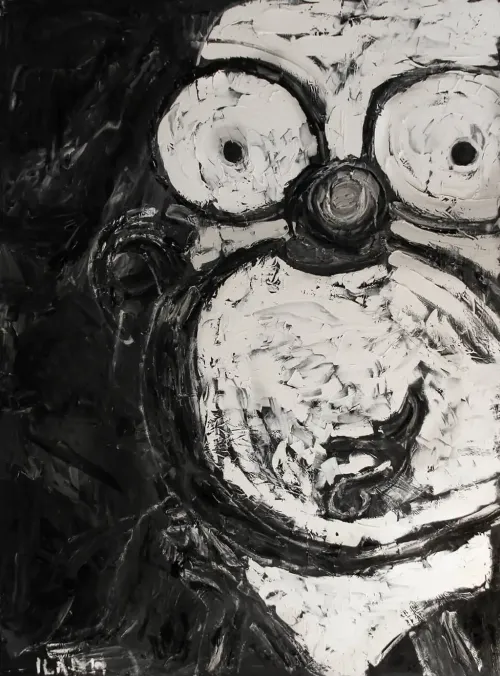







 in artwork
in artwork
 in artwork
in artwork


